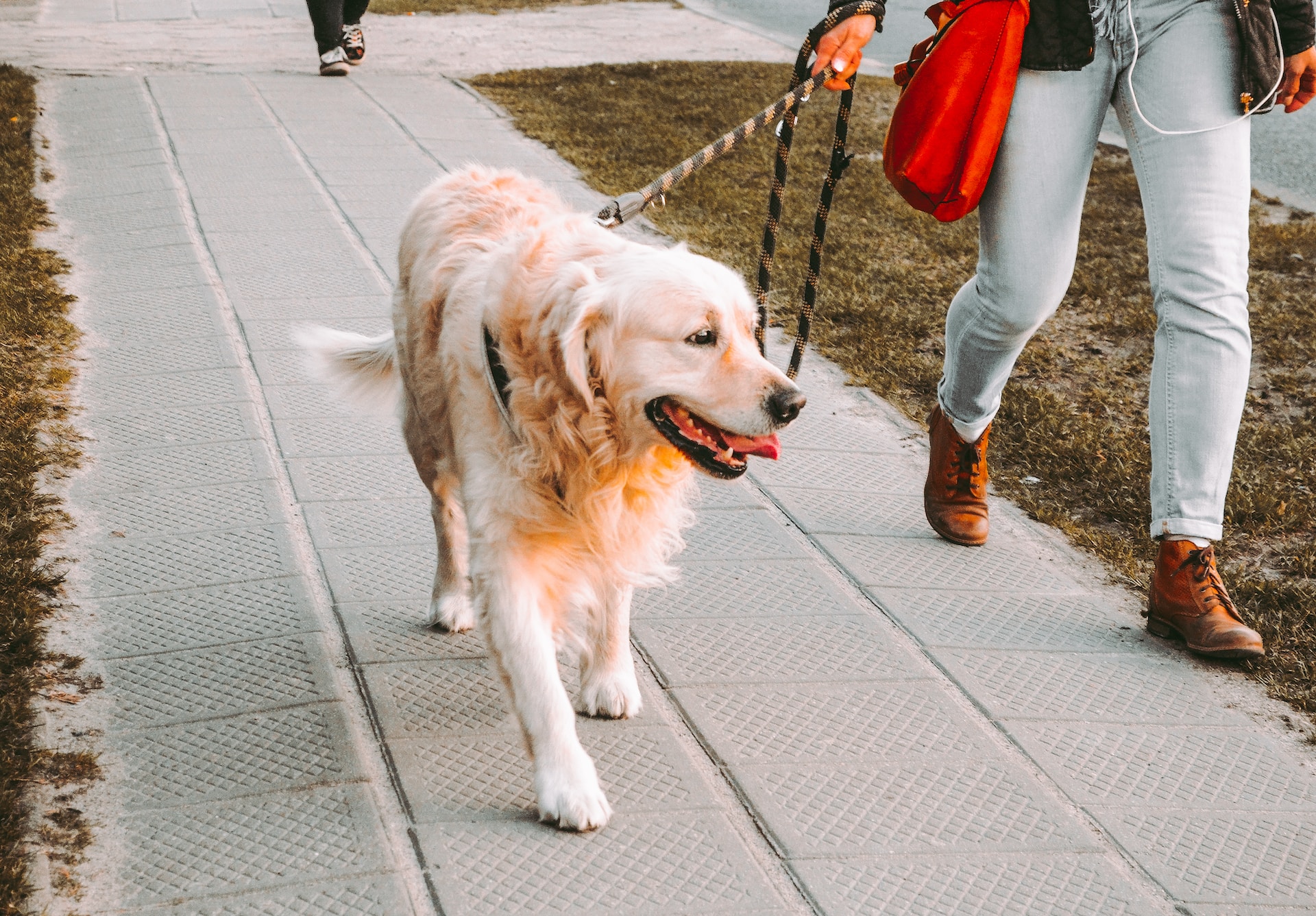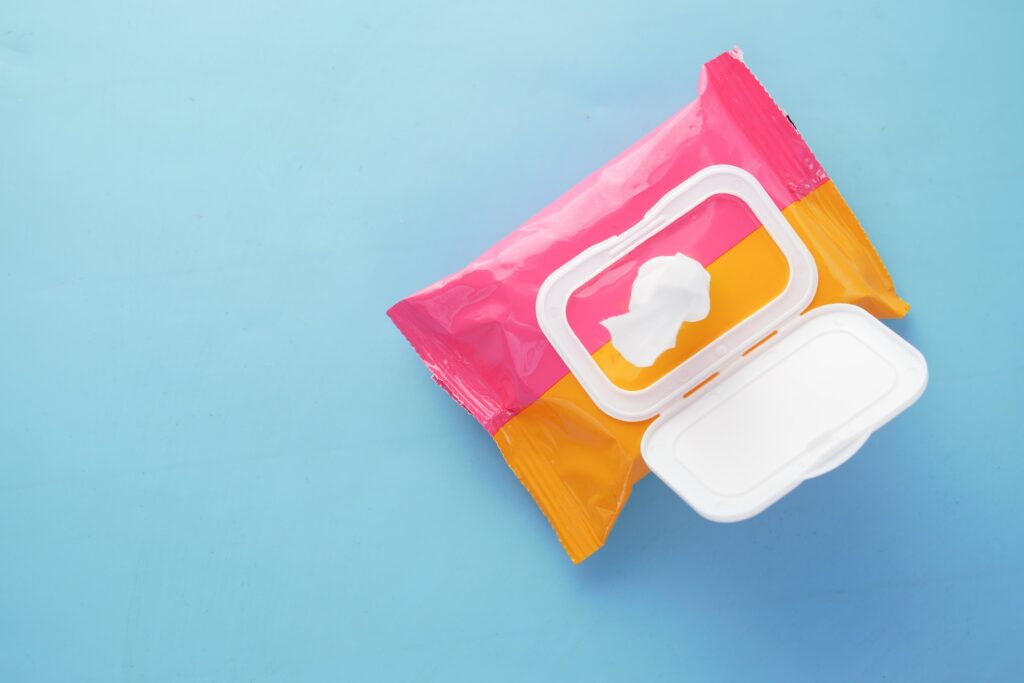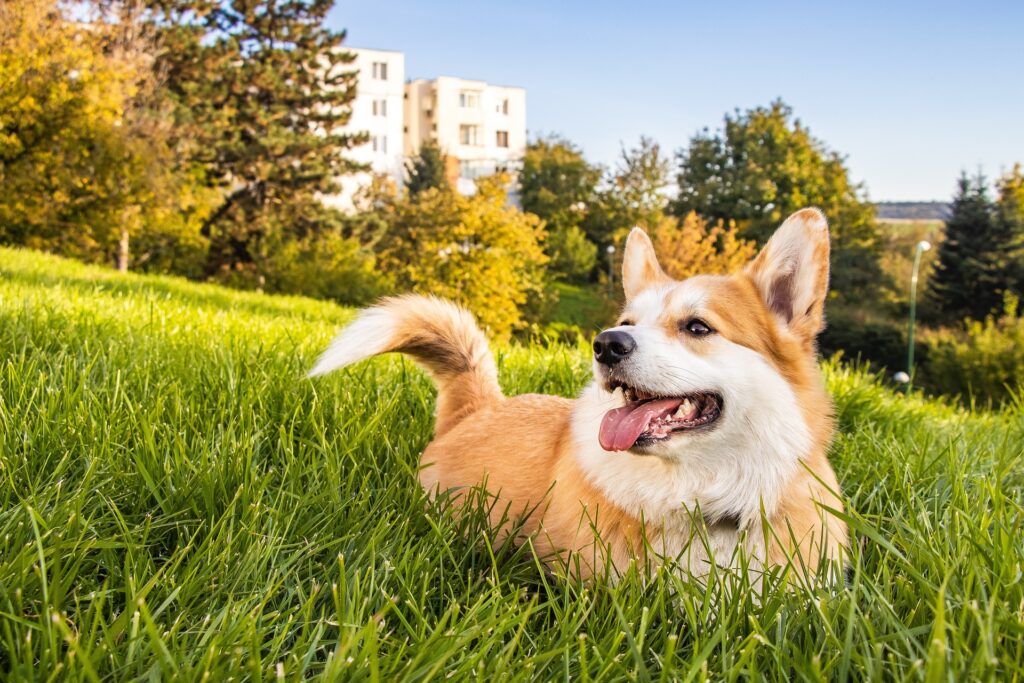Of what we know of dogs, they love two things, eating and walking. These two activities are equally enjoyable, but shouldn’t be done close to one another. So you might be wondering “should I feed my dog before or after a walk?”.
You can feed your dog both before and after a walk, but timing is most important. Try to have at least a 30-minute to 1-hour pause between two activities. Otherwise, you might end up causing Gastric Dilatation and Volvulus or other significant problems.
- What Are The Best Times To Feed And Walk Dog?
- What Is Gastric Dilatation And Volvulus?
- Reducing The Risk Of Bloat
What Are The Best Times To Feed And Walk Dog?
The best schedule you can make for feeding and walking your dog is to separate both activities by approximately 1 hour. For example, walk your dog at 6 in the morning, and then feed it at 7. But there are many benefits and drawbacks of different feeding schedules.
Benefits Of Eating Before Walking
If you are thinking about feeding your dog before or after a walk, you should be aware of the benefits and drawbacks. A great benefit of eating before walking is the fact that the dog will have enough energy to do some exercise. With food out of its mind, the dog will be able to walk around carefree.
Digestion and circulation will be improved if the dog eats before its walk. This improves the dog’s metabolism. This also helps maintain a healthy weight.
Drawbacks Of Eating Before Walking
The risks of feeding your dog before taking it on a walk might outweigh the benefits. These risks are most present if you are walking it less than 30 minutes after feeding.
Dogs are mostly exposed to gastrointestinal problems in this situation. It may first start as the dog experiences stomach pain while it runs around with a full belly. Then, the dog will start vomiting and its belly will start bloating. In time, this can lead to Gastric Dilatation and Volvulus, which is a life-threatening disease.
Benefits Of Eating After Walking
Having dog walking and mealtime considerations in mind, there are some benefits to taking the dog for a walk before feeding it.
One benefit of this is the fact that the organs have enough time to properly clear themselves during the early walk. The improved circulation helps discard all the metabolic waste before more are created during digestion. Walking before eating is also great because the exercise spends fat for energy and decreases body weight. This situation also decreases the chances of bloating.
Drawbacks Of Eating After Walking
There are some risks when walking a dog before feeding it. For one, a hungry dog will not have a lot of energy to move without proper nutrition. If the dog is too hungry, it might even get lethargic and light-headed. Having less energy also means less exercise, so the dog is at risk of putting on weight.
Hungry dogs also have a higher chance of developing hypoglycemia and all the risks associated with it. Dr. Olutunbi Idowu et al. describe the symptoms as such:
| Clinical signs may include altered mentation and behavior, seizures, syncope, muscle twitching/fasciculations, somnolence, exercise intolerance, muscle tremors, collapse, ataxia, weakness, and impaired vision. |
They are also more likely to seek out food while walking and potentially eating something dangerous.
What Is Gastric Dilatation And Volvulus?
Timing dog meals with walks is important in order to prevent a situation like Gastric Dilatation and Volvulus, also known as Bloat. This is a life-threatening gastrointestinal disease where the stomach fills up with gas to become bloated. In time, this bloated stomach can twist upon itself causing a blockage in the system.
The bloated stomach will push on the surrounding organs impairing their function. After this, Dr. Krista Williams explains that:
| Vital tissues are deprived of blood and oxygen, resulting in systemic shock. In addition, the pressure of the gas on the stomach wall results in inadequate circulation to the wall, causing tissue death within the stomach. Digestion ceases and toxins begin to accumulate in the blood, worsening the shock. |
The blockage in the gastrointestinal system will only allow more bloating in the stomach causing it to perforate. This situation requires a quick reaction from a vet and life-saving surgery.
Causes Of GDV
The biggest cause of Bloat is eating a big meal soon before exercising. The same goes for drinking large amounts of water before the walk. Dogs that drink water too fast can ingest large amounts of air that will bloat the stomach.
“Bloat can occur at any age, but is most often seen in middle aged dogs.”, says the Veterinary Medical Center of Central New York. Genetics plays a big part as the disease is noticed more in dogs that have parents that suffered from the same illness. Dogs that already suffered from Bloat have a higher chance of it reoccurring. Anxiety has also been recorded as a cause of this illness. Overweight dogs are also at risk of developing Bloat.
Which Dogs Are At Risk?
Apart from getting the proper timing for dog feeding and walking, the breed of the dog is also important when determining the risk. Larger dog breeds with deep chests are more likely to develop this condition. Such breeds include Akitas, Great Danes, Boxers, Doberman Pinschers, German Shepherds, Irish Wolfhounds, and more.
All that said, even though larger breeds have a higher chance of developing this condition, they aren’t exclusive to it. Smaller breeds can still have this disease, and it can even be present in toy breeds.
Symptoms To Look Out For
In order to promptly prevent and treat this life-threatening condition, you need to recognize the symptoms. Dogs that have Bloat will show the following symptoms:
- Swollen and bloated stomach
- Constipation
- Vomiting
- Difficult breathing
- Restlessness
- Inability to settle down
- Lying in weird positions
- Pacing and circling
- Whining and crying out in pain
- Retching or dry heaving
- Lethargy
- Collapse and shock
Noticing any of these symptoms in your dog, should worry you and lead you to consult the vet. They are especially worrying if you’ve taken the dog for a walk after a recent meal.
Treatment Of GDV
Besides meal scheduling in relation to dog walking, there are a few things you can do to prevent and treat this serious condition. The most important thing you can do is to seek veterinary care as soon as possible.
The first thing veterinarians may do is to stabilize the dog by starting intravenous fluid and pain medication. They may also try to insert a stomach tube to decompress the stomach. Then, the dog might need surgery to untwist the stomach, called a gastropexy. This means attaching the stomach to the abdominal wall, thus preventing it from twisting again. After that, the dog should rest after eating to prevent bloat and recover.
Reducing The Risk Of Bloat
Knowing how difficult this condition can be and what causes it, you will need to know how to prevent it from happening to your dog.
Create A Walking And Feeding Schedule For Your Dog
When preventing Bloat, a good way to start is to set proper dog nutrition and walking routine. Dogs like schedules so it won’t be hard for them to get used to it. Always set the times for eating and walking at least 30 minutes to 1 hour apart. Dogs will need around 30 minutes after a small snack, 1 hour after a small meal, and 2-3 hours after a large meal before exercising. There are many benefits of regular exercise for dogs.
Usually, it is recommended to feed dogs twice a day, once in the morning and once in the evening. But be careful because dogs will have diarrhea at night if they have their dinner too late. There should be around 8-12 hours between the two meals.
Feed High-Quality Diet
Providing proper nutrition and exercise to the dog will be of great value to its gastrointestinal health. What the dog eats is important to its health. Make sure you are feeding it dog food low in carbohydrates and high in protein. Giving your dog uncooked rice, or other similar human foods increases the chances for Bloat. You should also give the dog food in a slow-feeding bowl. This will prevent it from ingesting air and also control its weight.
Providing proper walking equipment can help your dog from choking, gagging, or vomiting while on a walk. Harnesses wrap around a dog’s body and don’t put any pressure on its neck. Dogs prone to GDV will benefit from having a harness.

Should I Feed My Dog Before Or After A Walk? – A Summary
The consensus for feeding a dog is to plan it to be around 30 minutes to 1 hour away from the walking. Feeding the dog before the walk gives it enough energy to walk and improves its metabolism. But it also puts the dog at high risk of developing Gastric Dilatation and Volvulus.
If you feed the dog after taking it for a walk, the benefits include faster weight loss and decreased risk of Bloat. But there are drawbacks like the dog not having enough energy to walk and developing hypoglycemia.
Bloat, or Gastric Dilatation and Volvulus, is a life-threatening disease of the gastrointestinal system. It is more common in larger dogs with broad chests that eat big meals before exercising. Your goal as the owner is to prevent this condition from ever happening to your dog.
FAQ
Is it okay to not walk my dog every single day?
It’s fine if you don’t walk your dog every day. Sometimes, you may be too busy to do so. Just make sure you let it spend its extra energy by playing games with it or letting it in the yard.
How long after eating do dogs poop?
Usually, dogs will poop around 30 minutes after eating. This makes it easier to decide if you should feed your dog before or after a walk. Then you can plan the walk precisely when the dog needs to relieve itself.
How long should a dog walk be?
The length of a dog walk differs depending on the breed of the dog. For example, Corgis need around 1 hour of exercise daily. Larger, more active dogs may need even more.
More dog health resources
Here are a few other resources talking about dog health.
- How fast does pumpkin work for dog diarrhea
- Valerian root dosage for dogs
- Why do dog leave odorless wet spots
- Pink spot on dogs lip
- No Scoot vs Glandex
You can find a lot more information on how to keep your dog healthy on our site Dogisa!
What To Do If Your Dog Ate A Baby Wipe: Advice And Solutions
Dogs like to chew on things and sometimes they will get their chompers on something…
Why do Dog Leave Odorless Wet Spots? And how to treat them
It is not uncommon for dog owners to notice that their dog leave odorless wet…
Why Does My Dog Only Have Diarrhea At Night? [How To Help]
Diarrhea is not an uncommon thing and most dogs will suffer from it at least…
A Complete Guide To The Corgi Heat Cycle [+ Tips]
Going into heat is what we refer to when we talk about periods in dogs….
Should I Feed My Dog Before Or After A Walk? [Simplified]
Of what we know of dogs, they love two things, eating and walking. These two…
Dog Ate Tampon – How Long Will It Take To Pass Easily?
Dogs are curious creatures by nature, and it’s no wonder that they scout for inedible…







